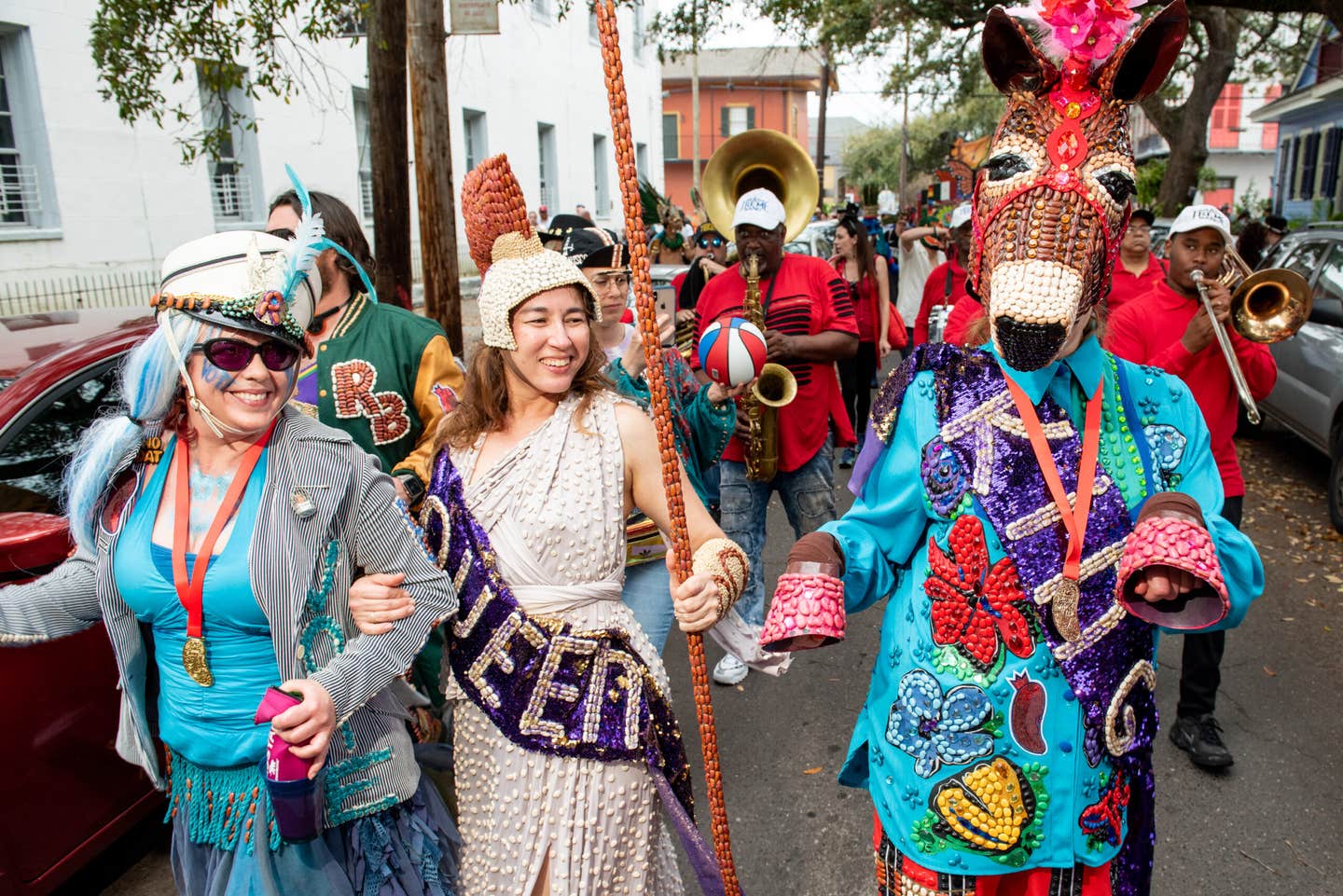
How a Humble Bean Unites New Orleans on Lundi Gras
A diverse multicultural parade pays homage to red beans and rice.
Food is more than what’s on the plate. This is Equal Portions, a series by editor-at-large Shane Mitchell, investigating bigger issues and activism in the food world, and how a few good eggs are working to make it better for everyone.
“Making a bean suit has the power to bring people together,” says Devin DeWulf, founder of the Krewe of Red Beans. “It creates a sense of belonging and community, a powerful and healing thing, especially in times of distress like a hurricane or pandemic.”
DeWulf ate beans twice a day as an exchange student in Brazil during 2005, but when he moved to New Orleans, his love of the humble kidney bean manifested in a new creative expression for a city that marches on its stomach. Inspired by Black Masking Indians, the carnival revelers who don elaborately beaded regalia during Mardi Gras parades, DeWulf formed the Krewe of Red Beans in 2009, when two dozen friends hot-glued thousands of pounds of legumes onto playful outfits depicting swan mermaids, alligators, pirates, and skeletons to honor what DeWulf calls the “beaning season.”
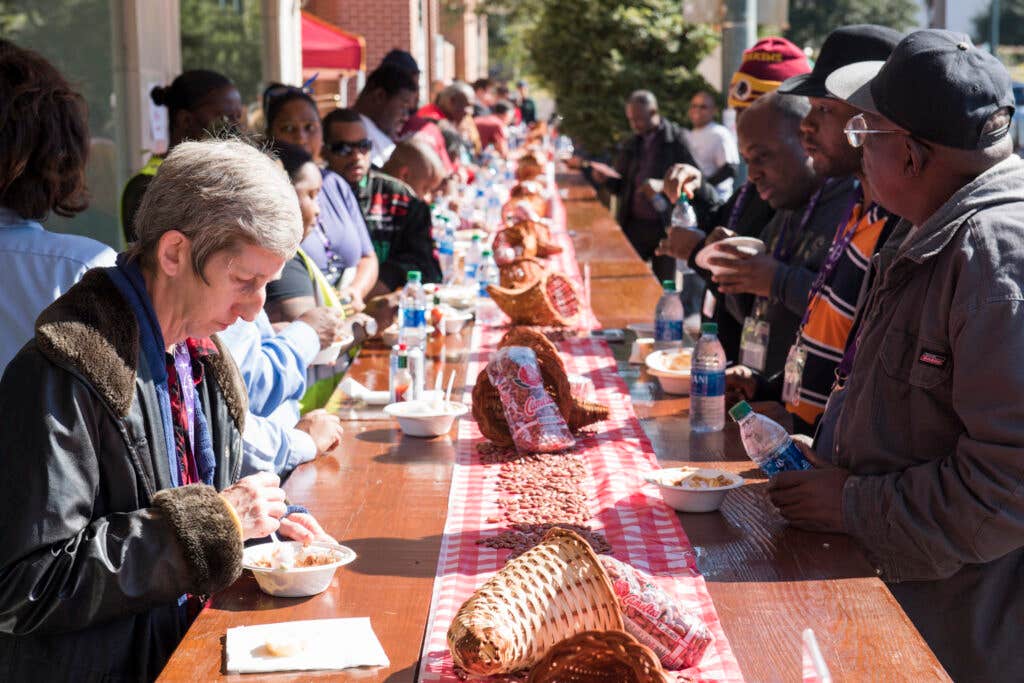
New Orleanians eat red beans and rice on Mondays. While this culinary custom lacks definitive roots, it may have resulted from two household chores: doing the laundry while putting a meal on the table. Back when Creole women laboriously scrubbed linens by hand, a low-maintenance pot of beans simmering on the stove was a wash day kitchen hack that would become part of the city’s intangible culture. The first attributed recipe for haricots rouges au riz appears locally in The Picayune’s Creole Cook Book (1901) but like other food traditions that are passed down orally, the dish most likely arrived in New Orleans a century or more prior with its pan-racial founders.
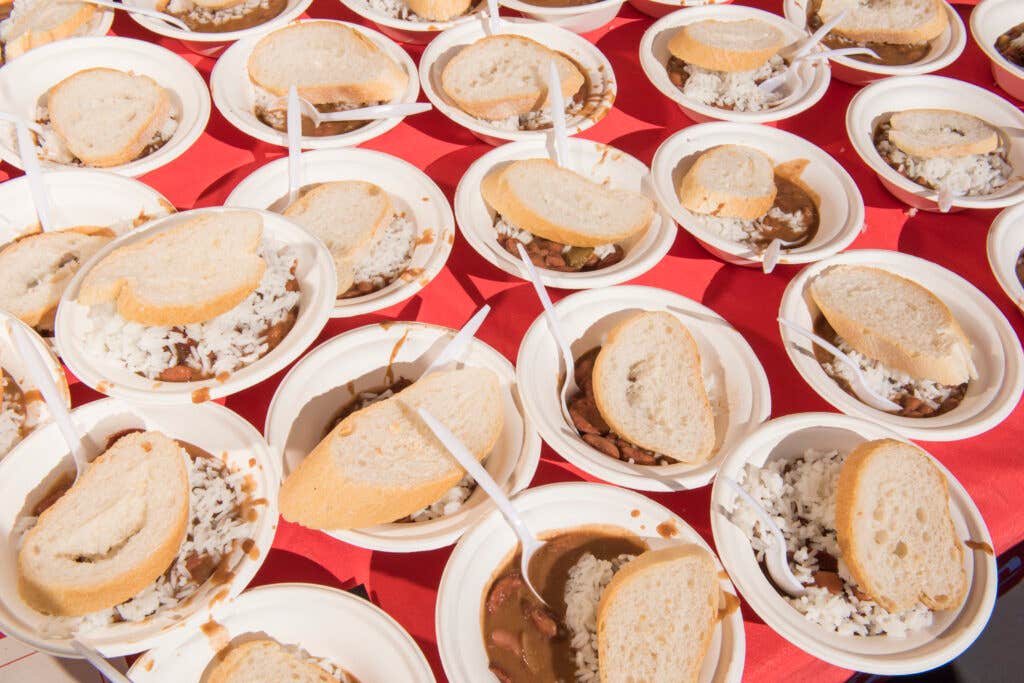
The pairing of any beans and rice, often seasoned with salted meat or leftover ham bones, has a long history in Creole cultures elsewhere: diri ak pwa wouj in Haiti, arroz junto in Puerto Rico, and feijoada in Brazil, to name a few. But nowhere is this simple meal celebrated with such relish as in the parishes along the lower Mississippi River—and especially on Lundi Gras (February 28 this year) during the Krewe’s trio of walking parades when laissez le bean temps rouler, right before the rest of the city parties hard on Fat Tuesday.
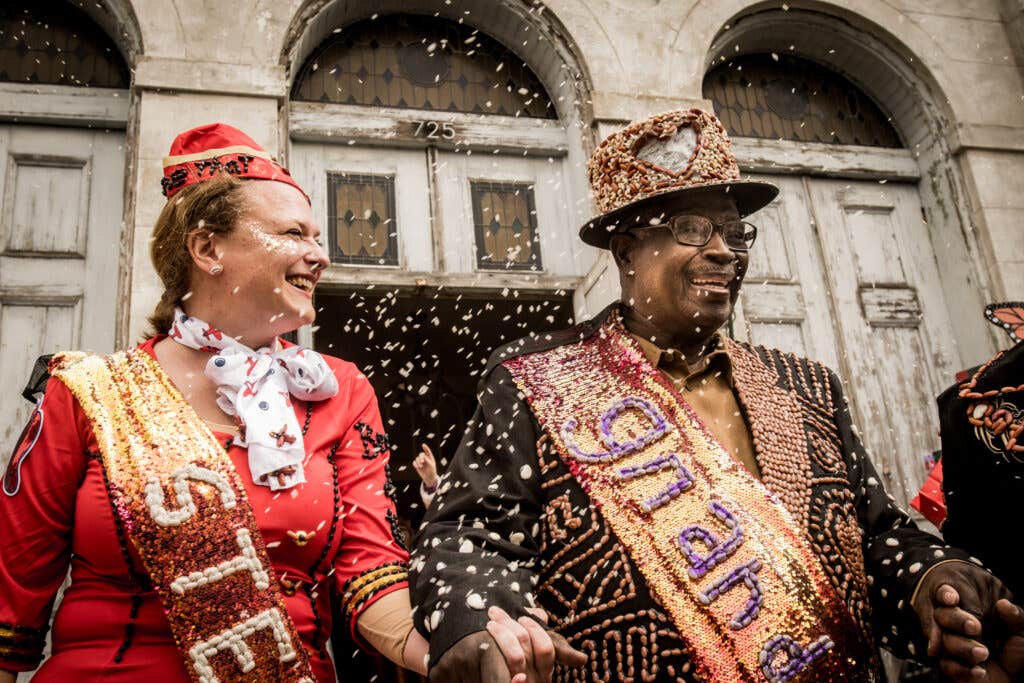
The Krewe of Red Beans now numbers more than 500 revelers, and over the years, their bean suits have only become more expressive of the city’s adaptive history—cultural signifiers such as a carriage mule, a Carnival grand marshall, and voodoo saints are regularly represented—but members are required to abide by a respectful code of ethics when building their costumes. The Krewe doesn’t allow changing of skin color, appropriation of another culture’s attire, or use of derogatory and harmful messaging. “One of our members was Honduran, and she decided to reclaim the term ‘frijolera,’” says DeWulf of the offensive Hispanic slang for someone who eats beans. “But is that a word everyone should reclaim? We try to educate away from terms like that, and want everyone to feel welcome.''
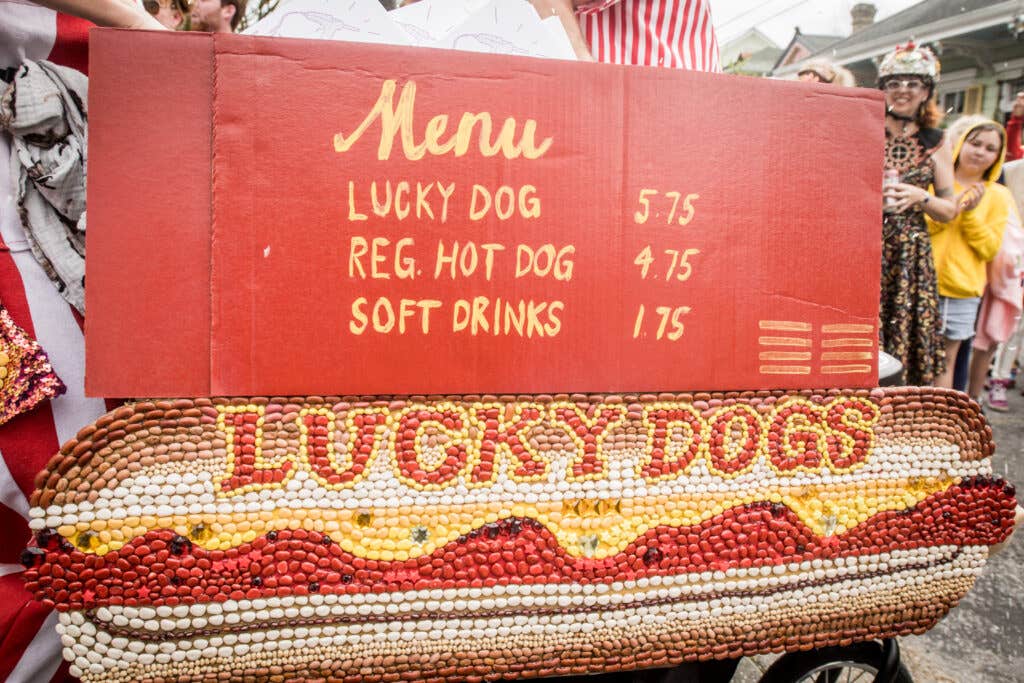
Cultural reverence is reflected in all three parades organized by the Krewe: in addition to the original Red Beans route that winds around Faubourg Marigny, the Dead Beans parade centers on global afterlife beliefs in Bayou St. John, while in the Bywater, Feijao pays homage to the Carnival traditions of Brazil. “As our krewe grows, we’re expanding our celebration of places that have both Carnival and bean culture, making for a more diverse celebration here,” says DeWulf. All parades converge in Treme for a raucous street party that is pure New Orleans, complete with jazz bands and second line-style dancing, before everyone heads home to their Monday of Mondays dinner.
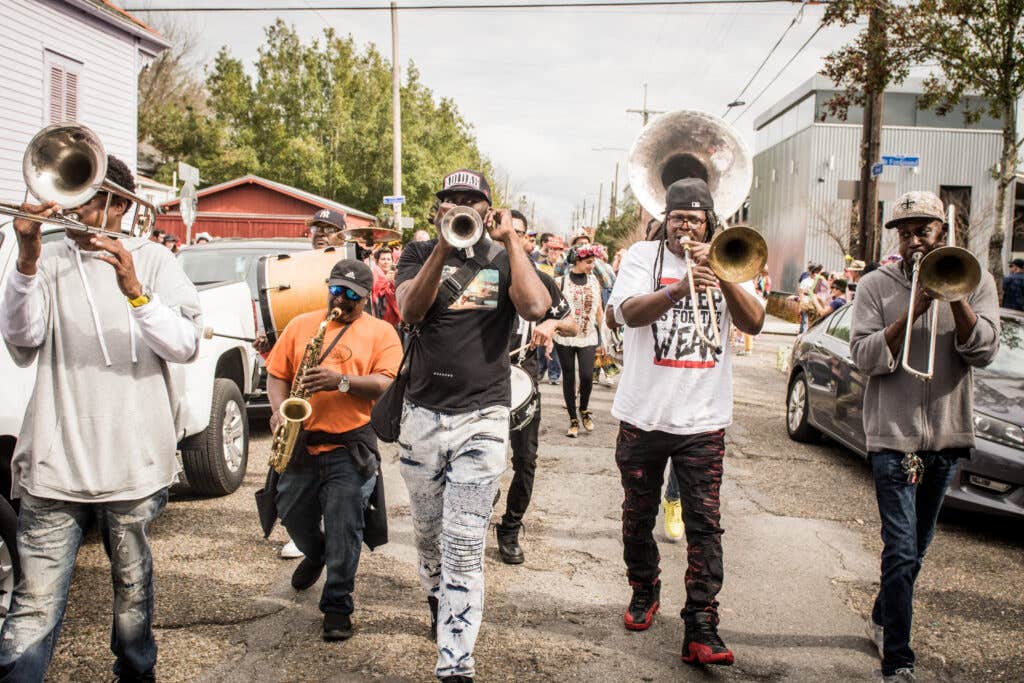
“My parents taught me how to cook beans,” says Vince Hayward, whose family started Camellia Brand in 1923. (In New Orleans, Camellia is synonymous with kidney beans, even though the company sells 19 dried varieties.) “We were a smoked ham hock style of bean eaters. Now, I cook beans in a crockpot, just dump the ingredients in, and dinner is ready when I get home.”
Hayward’s bean company contributes the raw materials for the Krewe of Red Beans’ Lundi Gras parade costumes; he estimates that the company’s support for other food-oriented local initiatives—school fairs, neighborhood gardens, church groups—provides roughly 250,000 meals a year. “We’re a part of the fabric of New Orleans, a city inextricably tied to red beans and rice,” says Hayward. “In terms of being a good citizen of the community, we donate to virtually any event or fundraiser doing good deeds, no questions asked.”
One of those foundational projects is Beanlandia. Other krewes have members-only dens, but the motto of this inclusive cultural center rising in the Bywater says it all: “Red Beans is for the people.” The Krewe of Red Beans is currently crowdfunding to convert an old warehouse into a hybrid space for a bean museum, krewe headquarters, performance hall, and neighborhood gathering place. “Beanlandia will be a creative venue for the folks who are the backbone of New Orleans culture,” says DeWulf. “Second liners, baby dolls, musicians, Mardi Gras Indians. We want to make a space that’s not just about a parade, but a mechanism to support our city.”
All this, from a little bean.
Please consider helping New Orleans’ most vulnerable culture bearers through Feed the Second Line, which delivers groceries to the elderly and creates gig opportunities for local musicians and performers.
Recipes
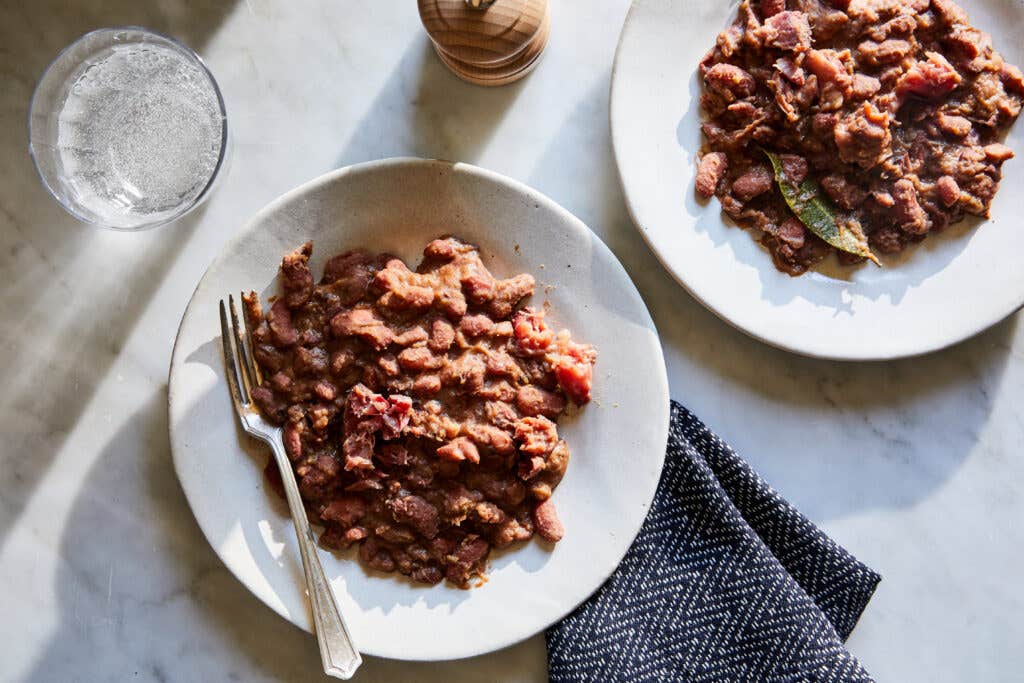
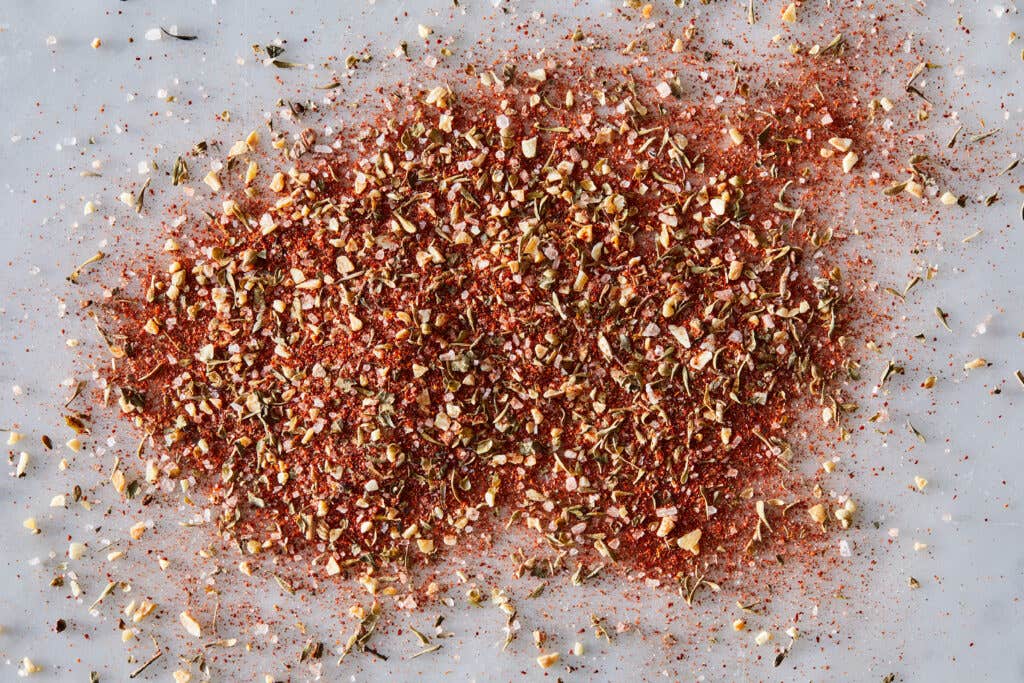
Keep Reading
Continue to Next Story










